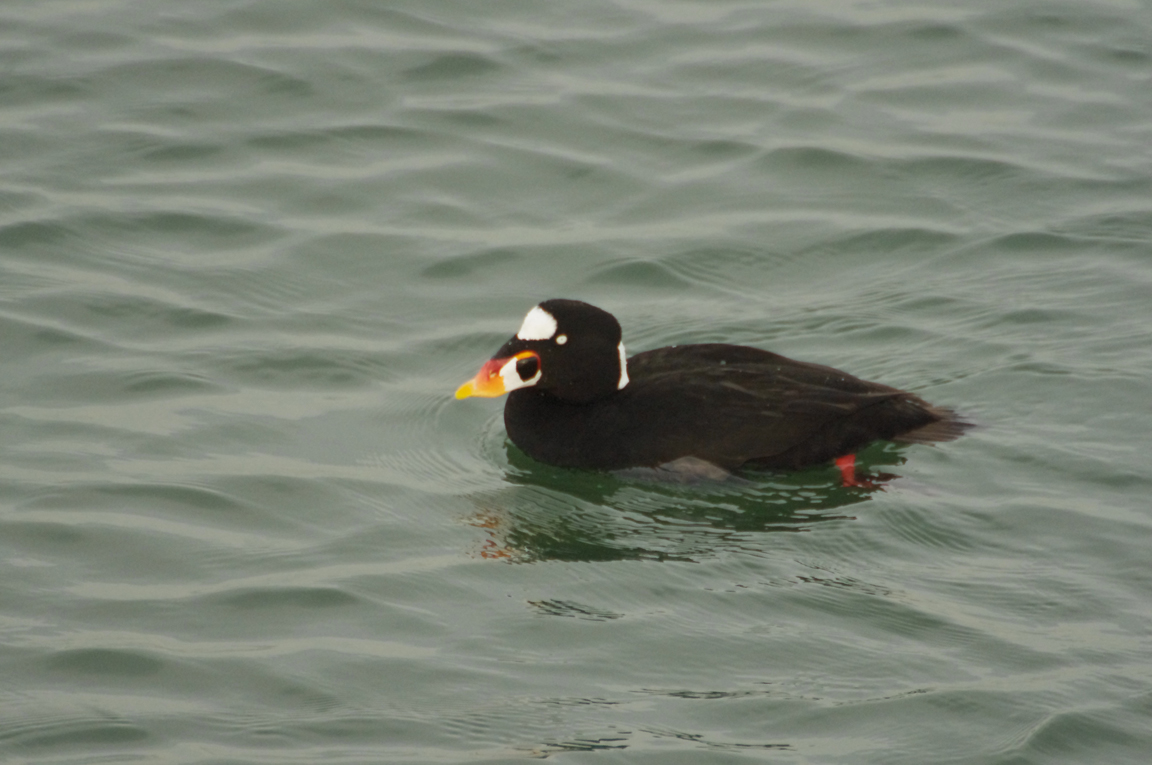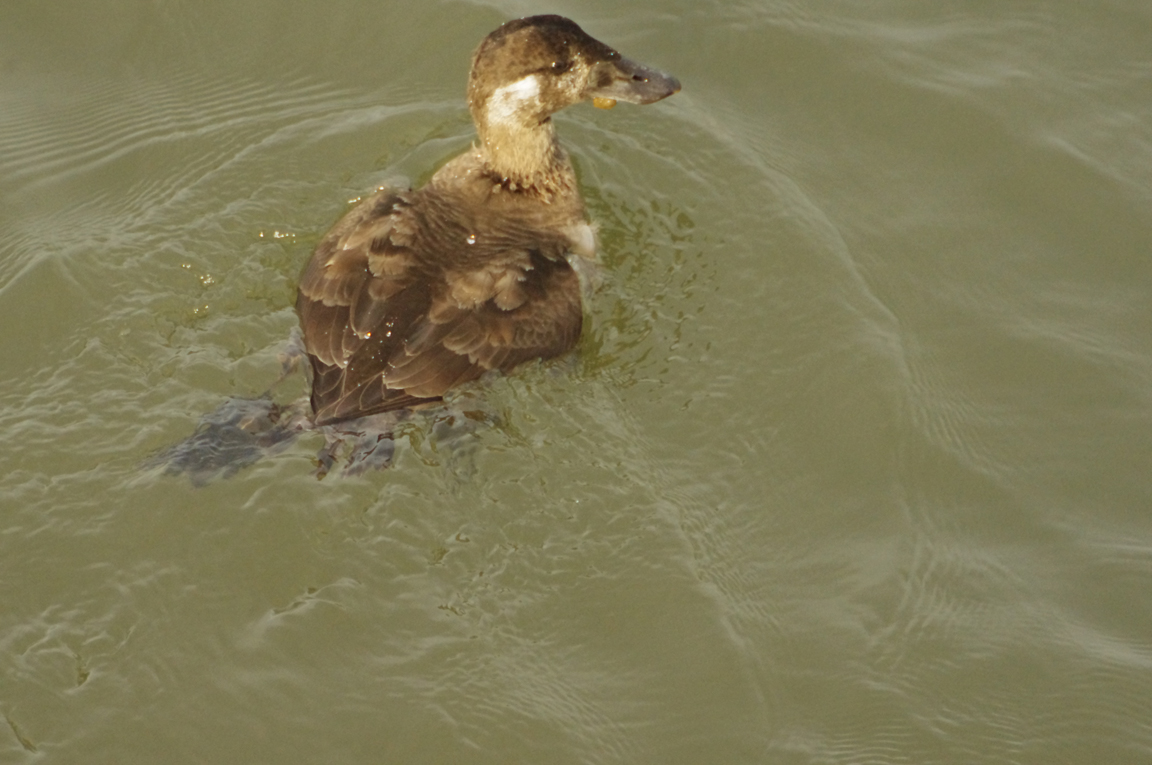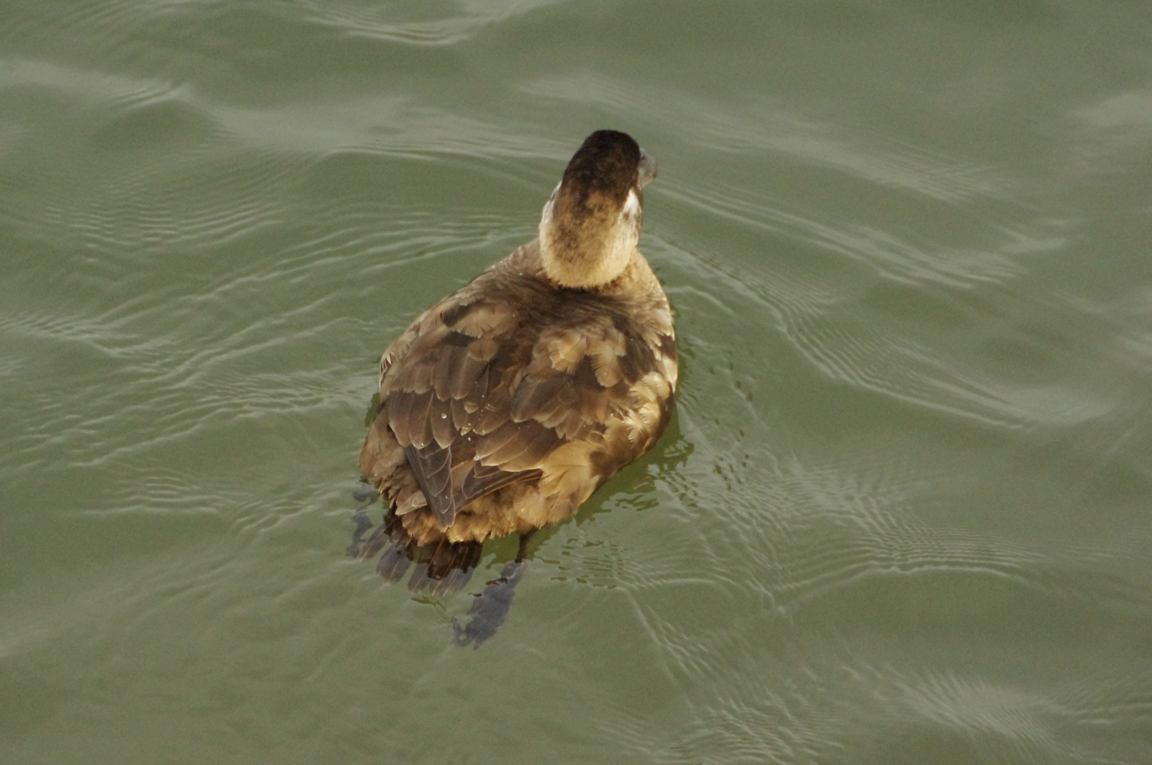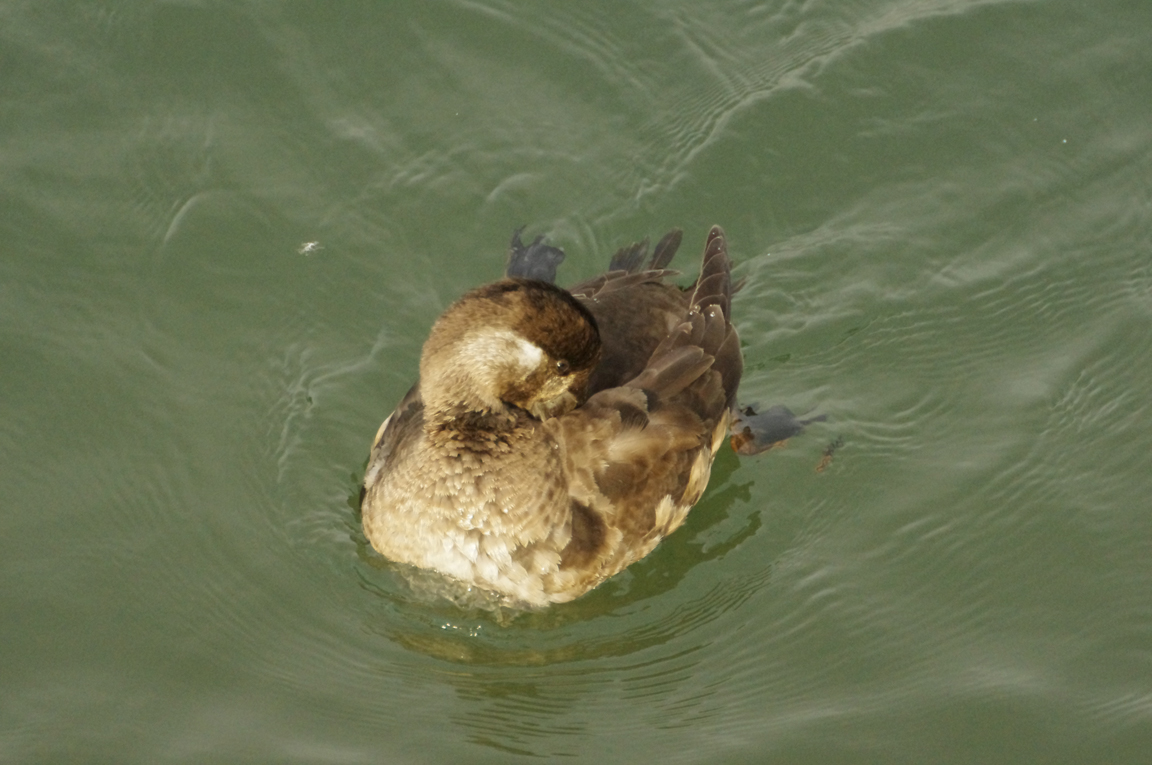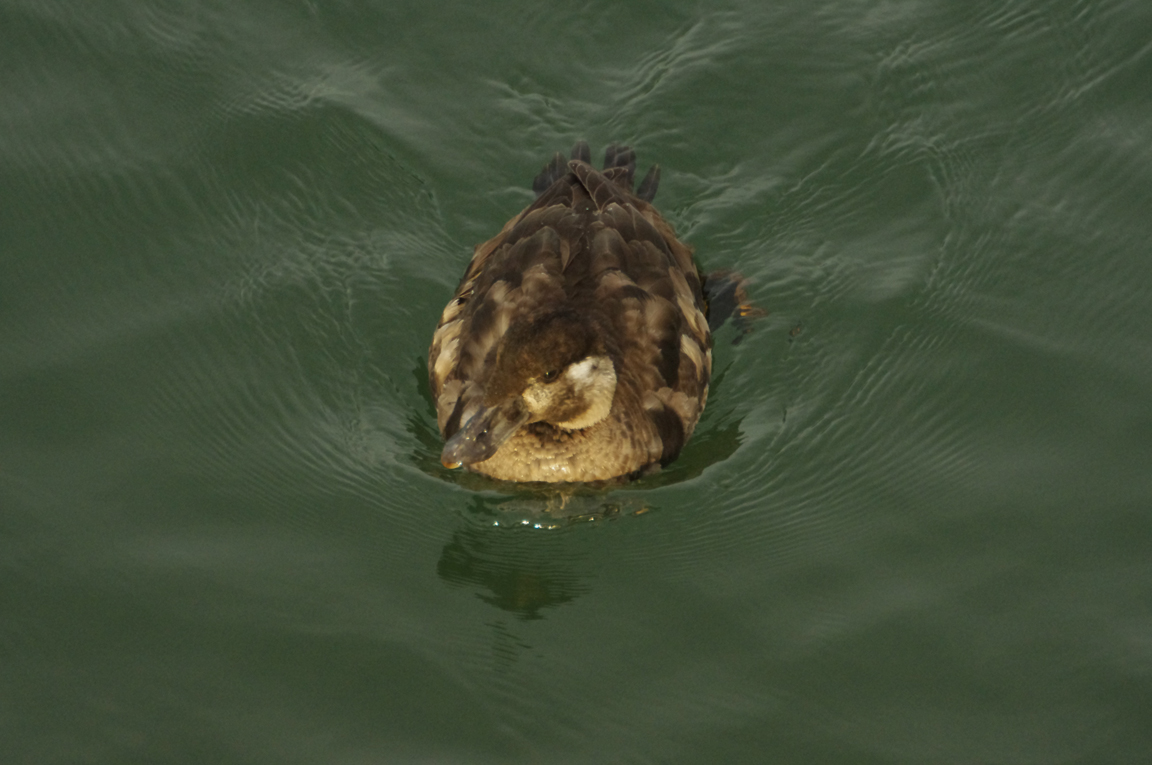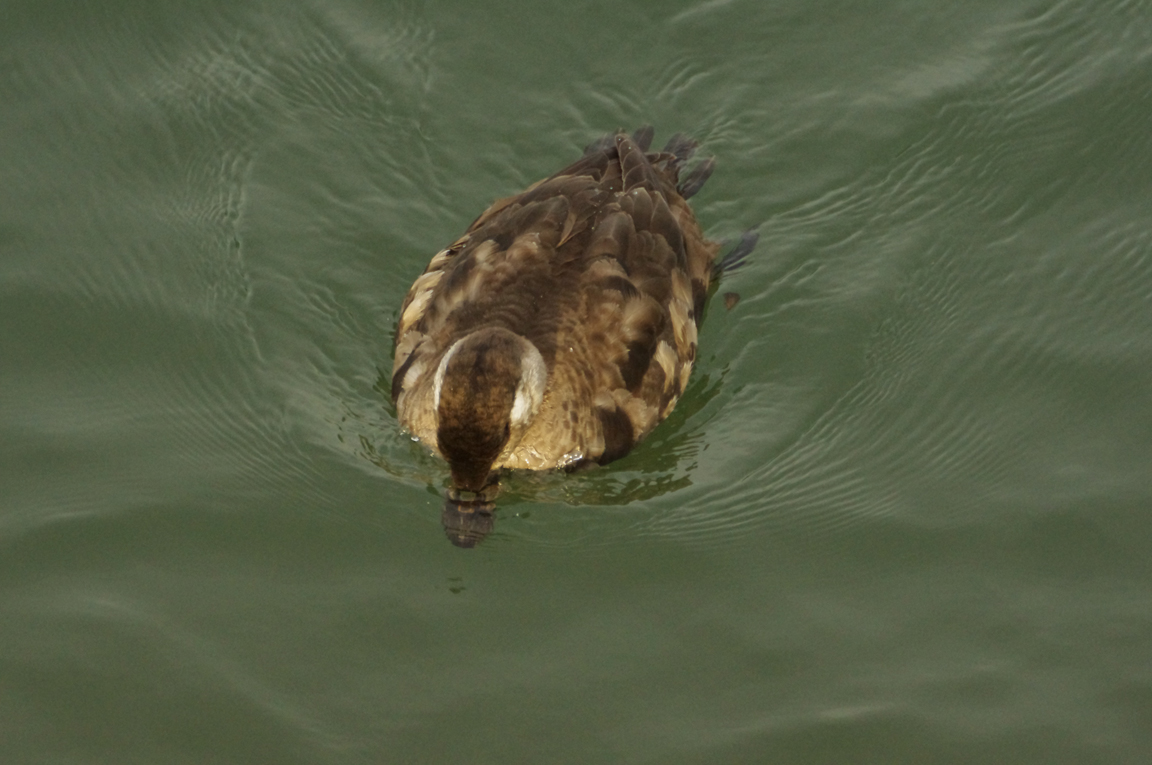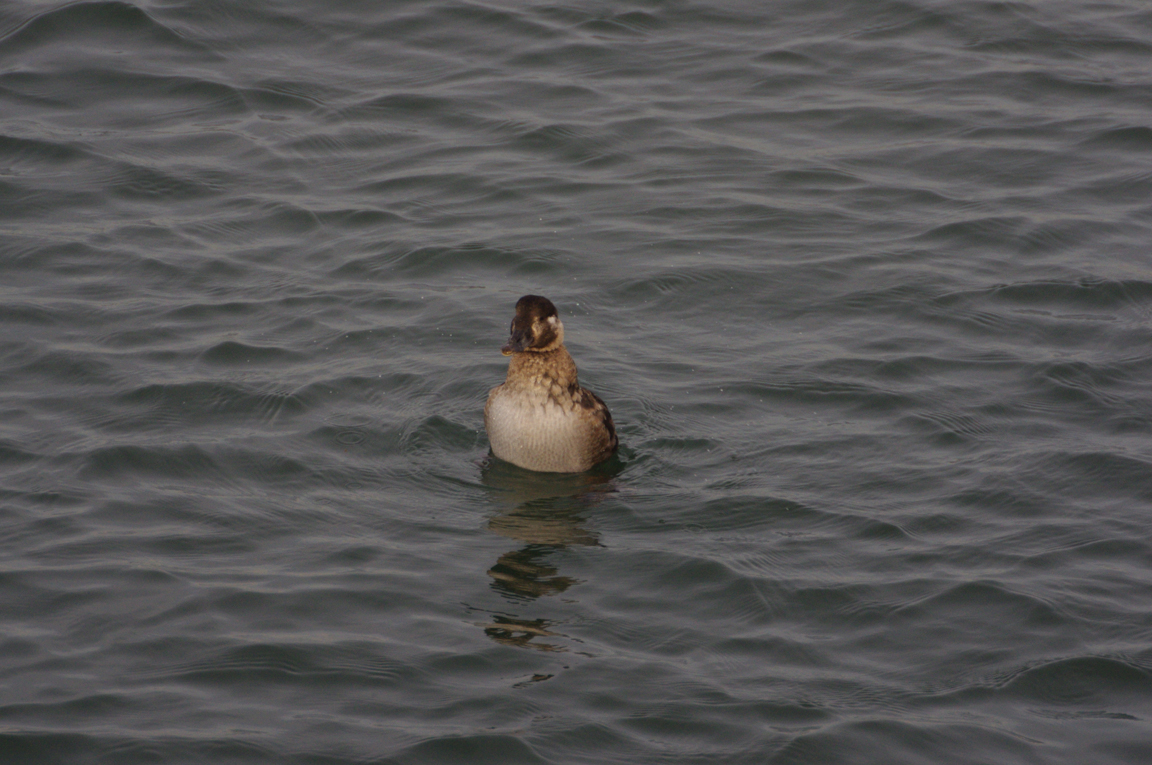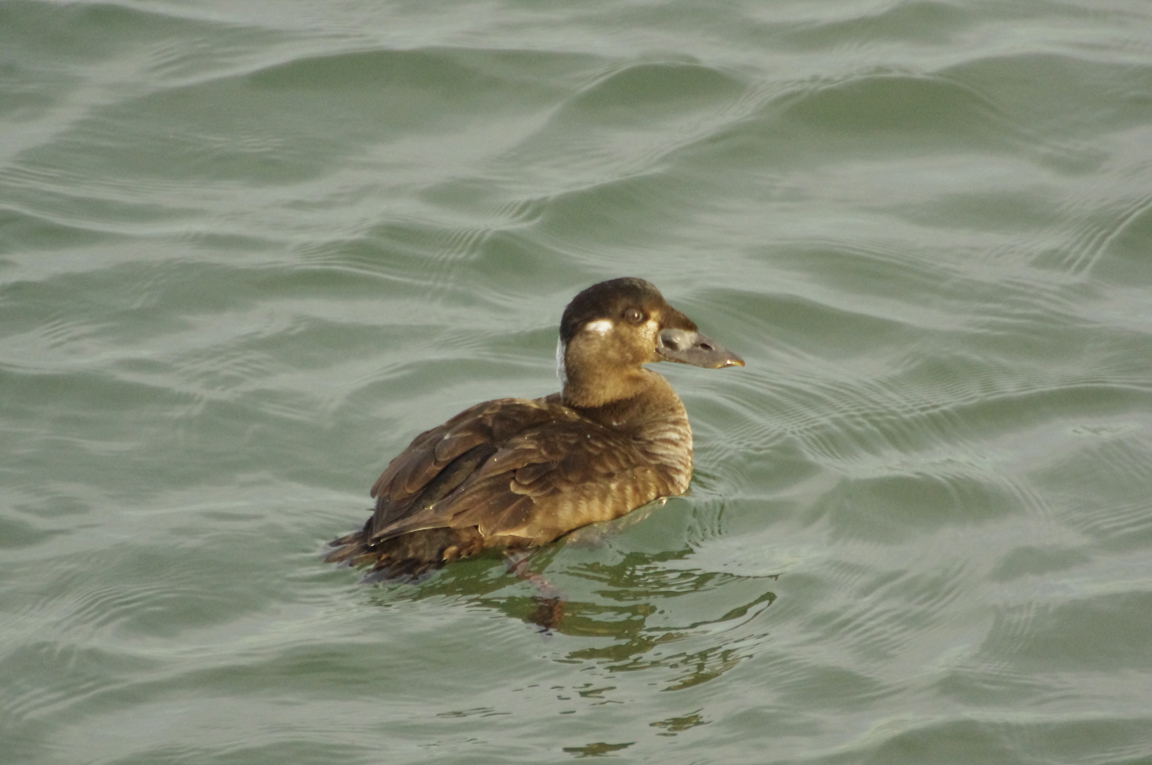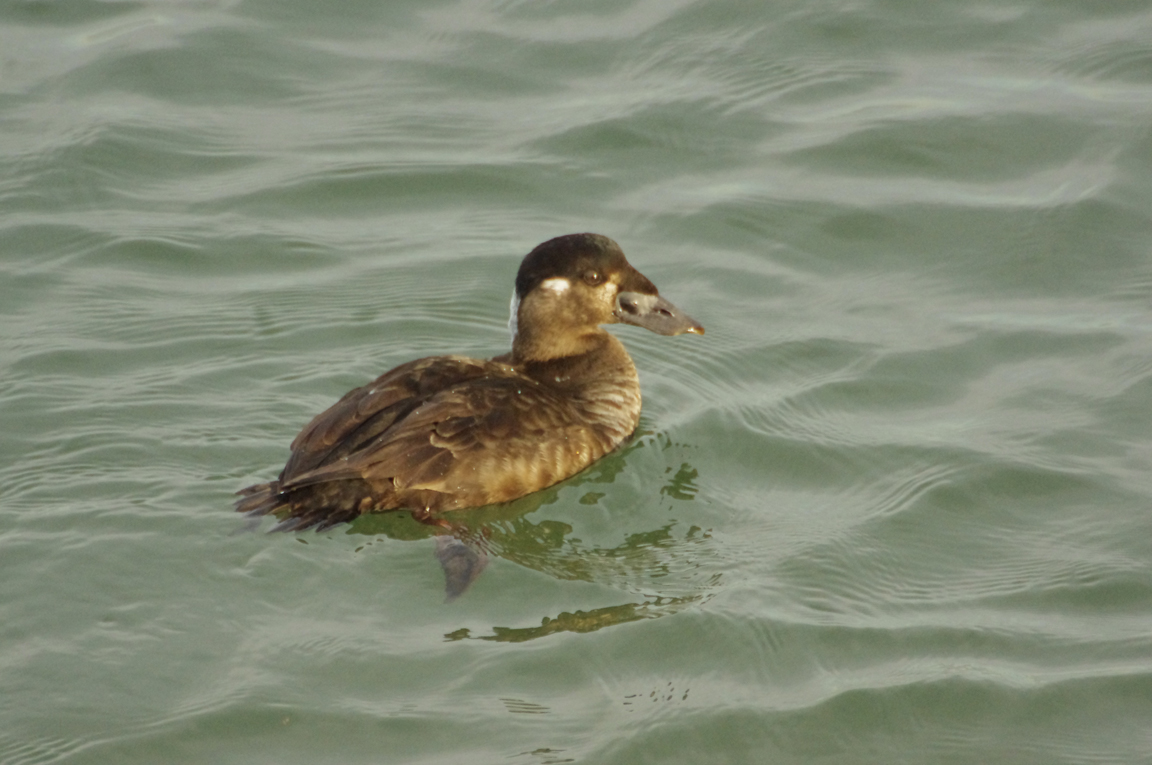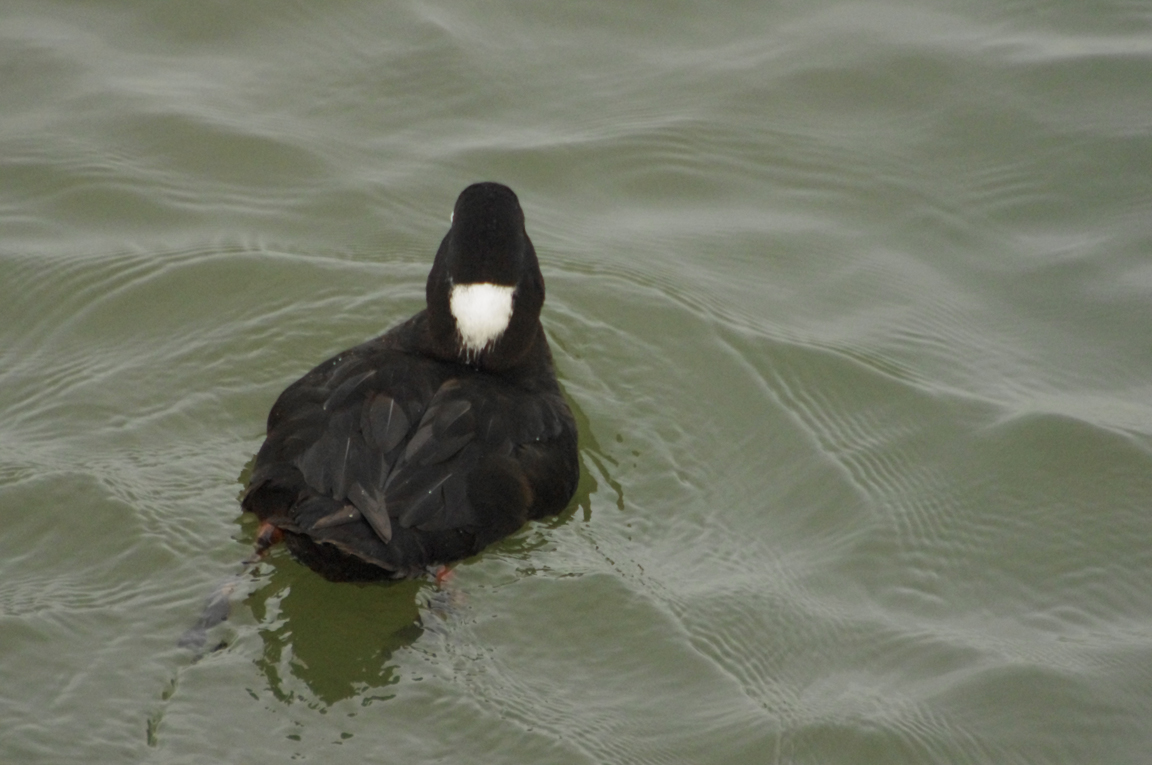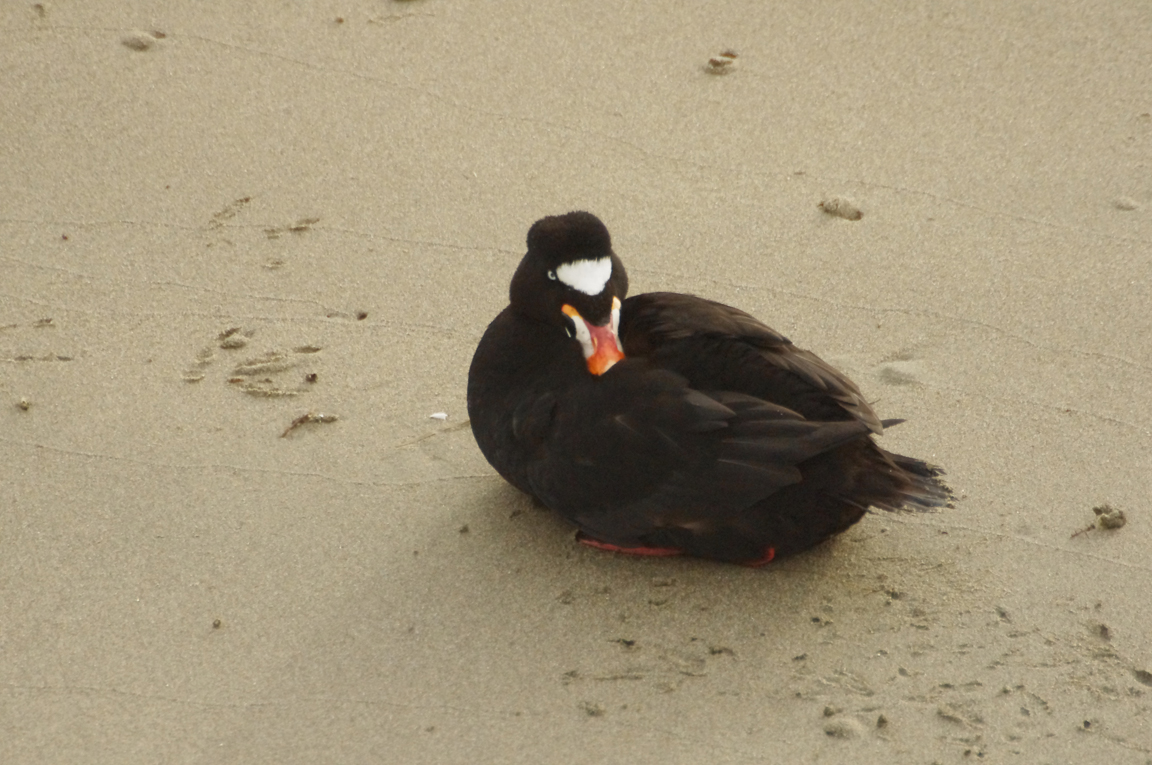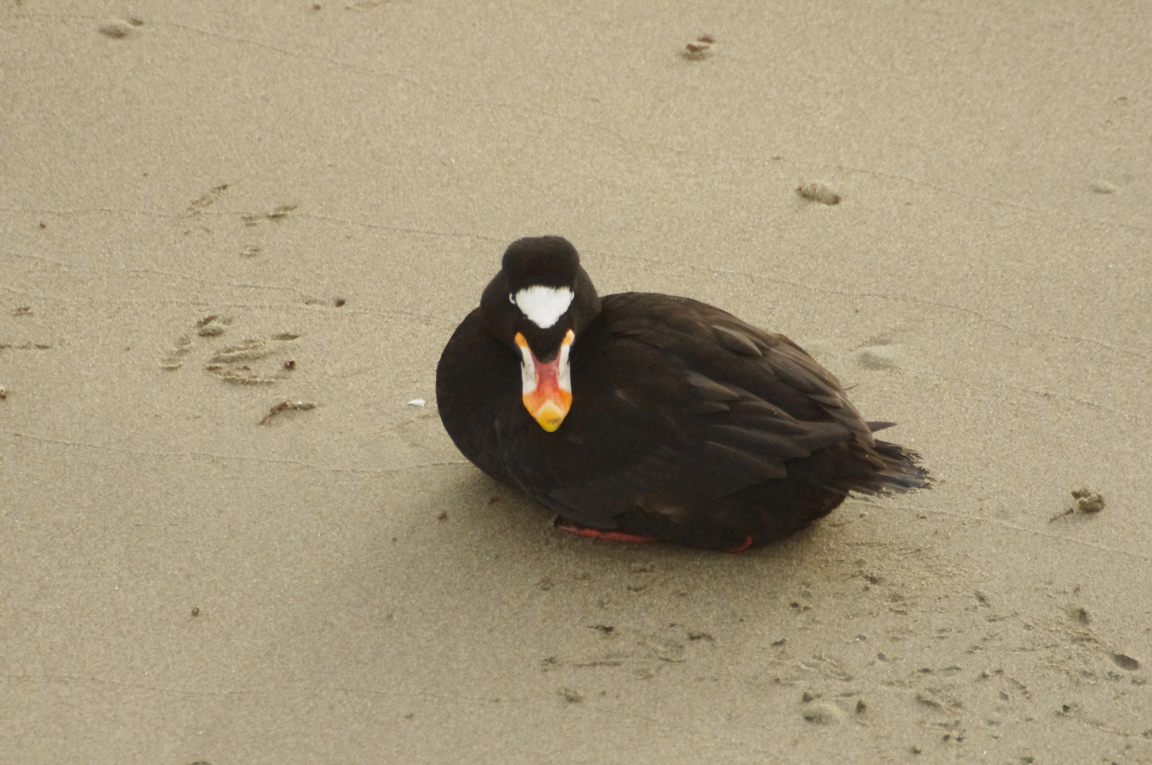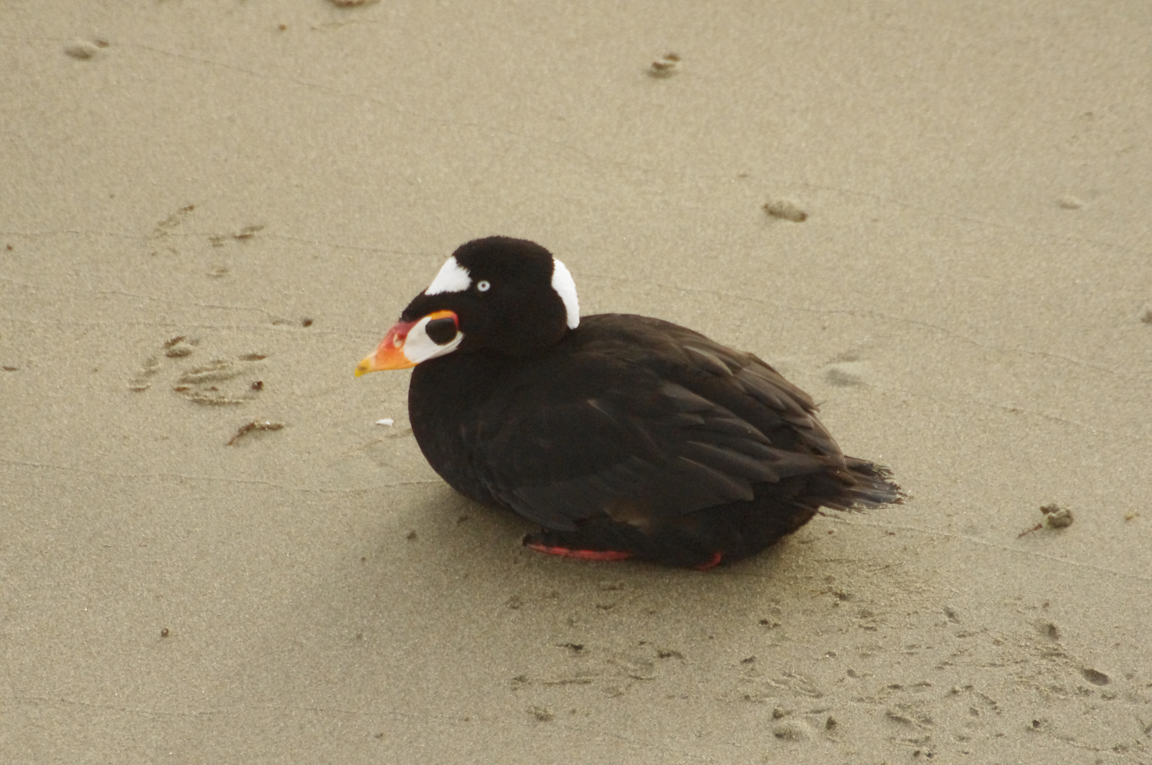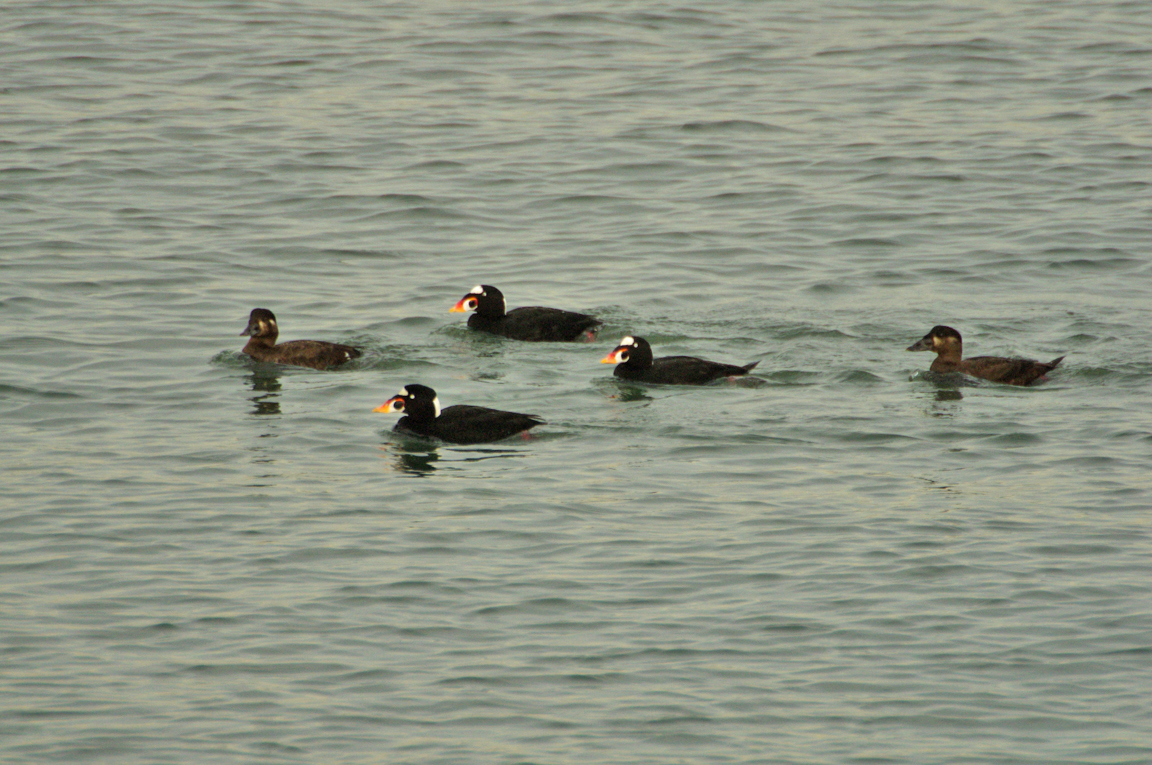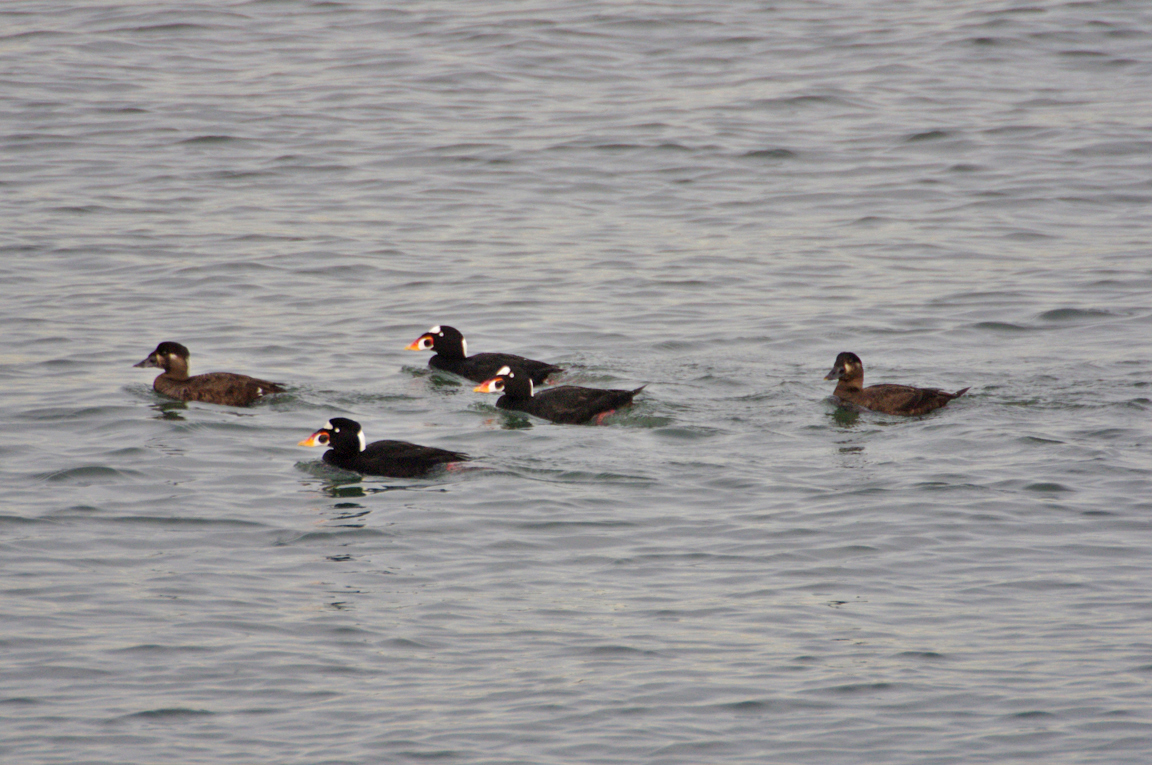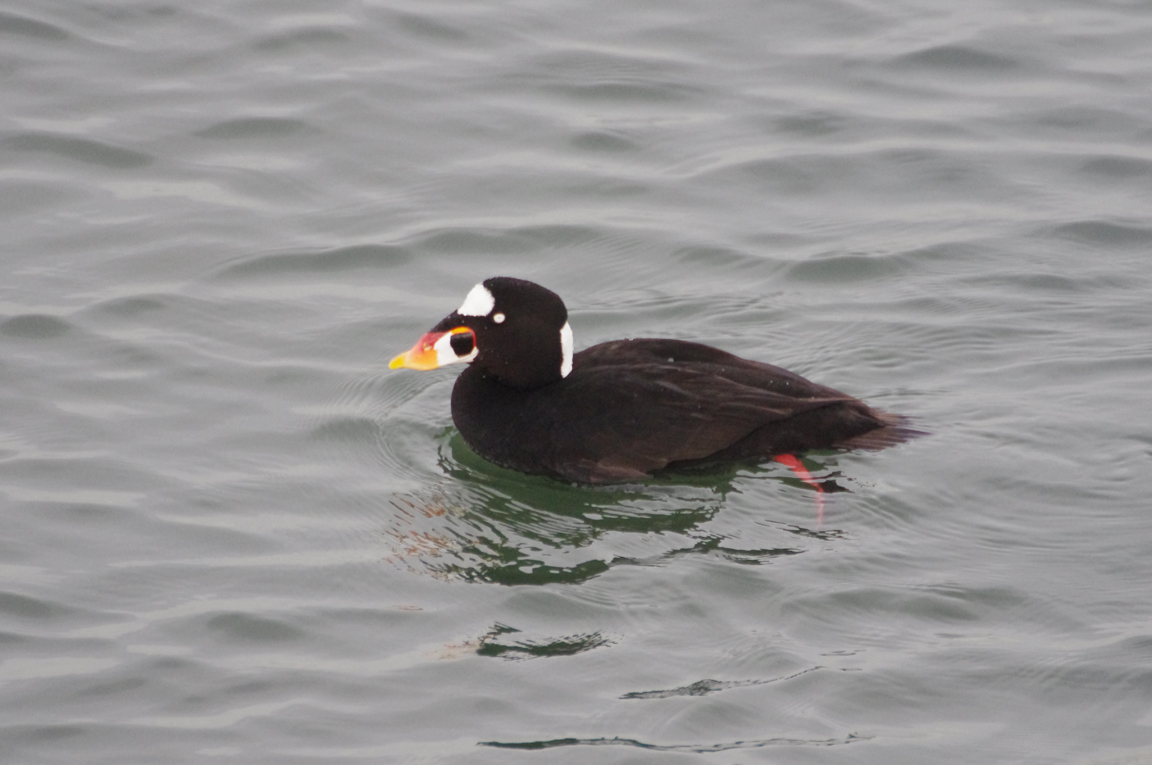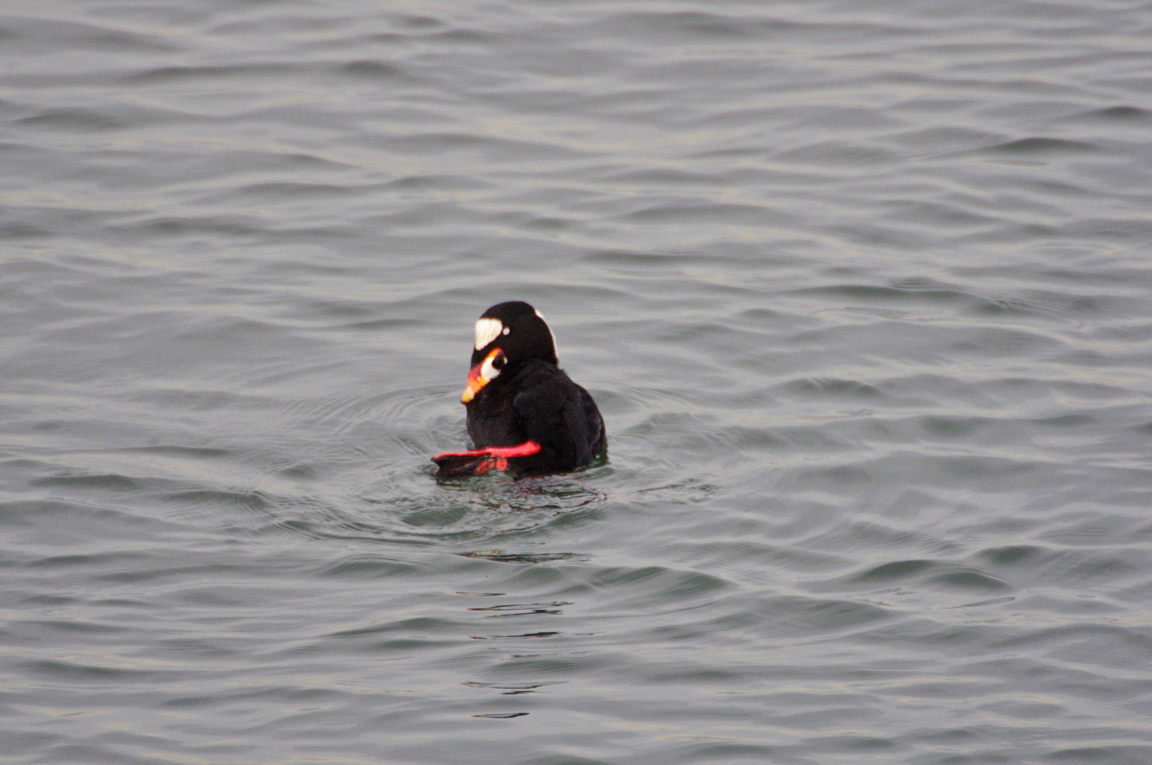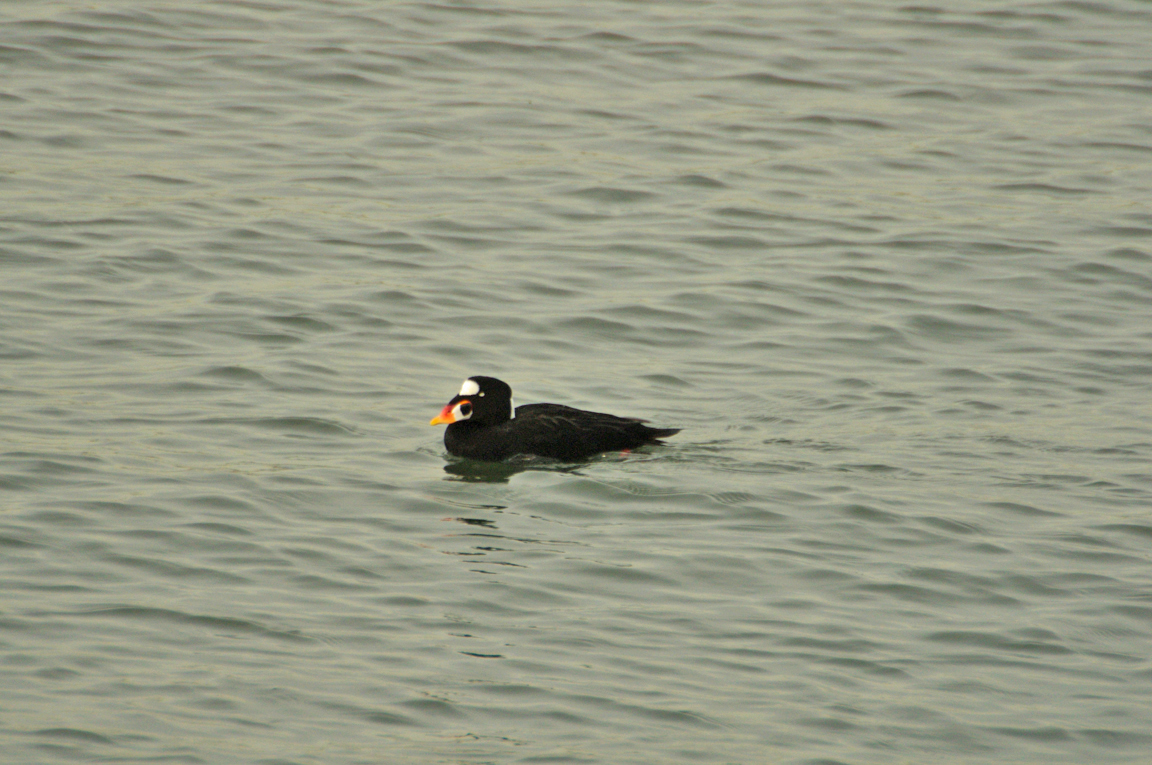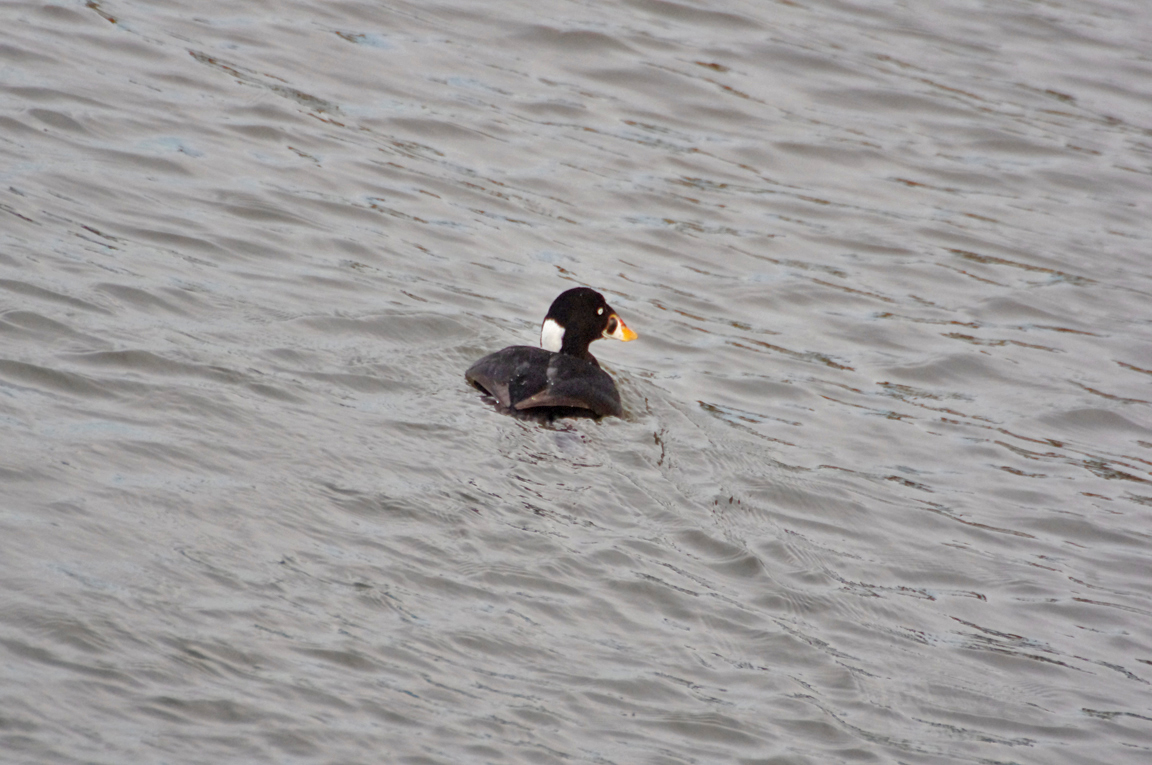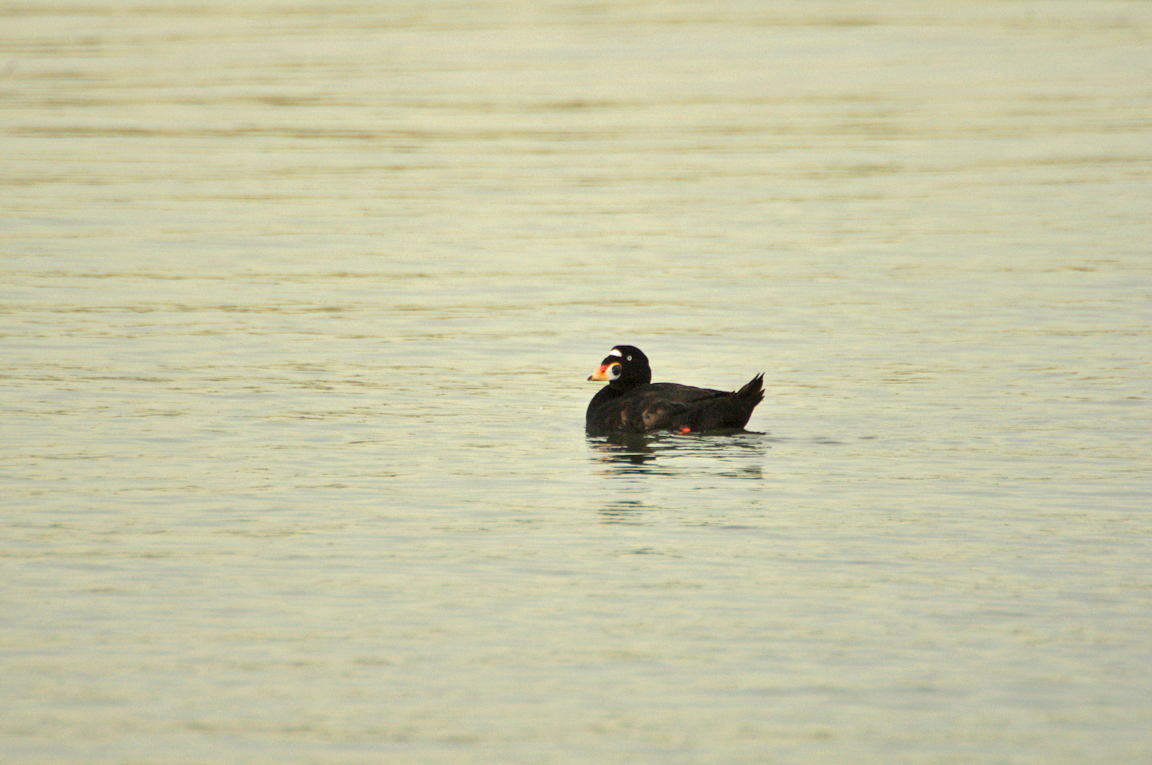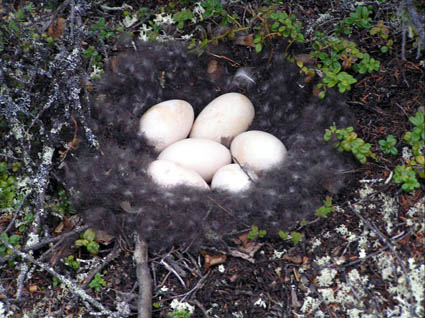|
|
|
 |
Surf Scoter
|
| Melanitta perspicillata | |
A black-and-white seaduck common on the Pacific and Atlantic coasts in winter, the Surf Scoter has a boldly patterned head that is the basis for its colloquial name "skunk-headed coot."
Interesting Information
-
The Surf Scoter breeds on freshwater lakes, where the male defends a moving area around the female. The female with a brood is not territorial.
-
Accidental exchanges of young among Surf Scoter broods are frequent on crowded lakes. Because the mother provides no parental care other than guarding the chicks, evolutionary selection to prevent such mixups may not be very strong.
-
Nonbreeding Surf Scoters (mainly immatures) do not necessarily go to the breeding grounds in summer. Instead they spend the summer primarily along marine coasts southward to Baja California and New Jersey, where they frequent bays and estuaries.
Description
Adult Description
-
Size: 48-60 cm (19-24 in)
-
Wingspan: 77 cm (30 in)
-
Weight: 953-1769 g (33.64-62.45 ounces)
-
Large, stocky diving duck.
-
Black.
-
No white in wings.
-
Male with one or two white patches on head.
-
Female with whitish patches on face.
Sex Differences
Male with bold white patches on head and bill colored white and orange; female less distinctly marked with smudgy face patches and dark bill.
Male
Entirely velvety black, except for white patch on forehead and larger white triangle on nape. Bill large and swollen at base of upper bill. Bill patterned with white, red, yellow, and a black patch near base, appearing mainly orange at a distance. Eyes pale blue-gray or yellowish white. Feet reddish orange with dusky webs.
Female
Plain dark blackish. Crown darker than rest of head and neck. Two poorly defined light areas on side of head: one near the bill, and the other behind the eye near the cap. Small pale nape patch may or may not be present. Bill only slightly swollen, green-black with indistinct black patch surrounded by gray at base of upper bill. Eyes pale brown, may be pale gray or yellow. Feet yellow to brownish red, with dull black webs.
Immature
Similar to adult female but with white belly and more distinct face patches. Eyes dark brown.
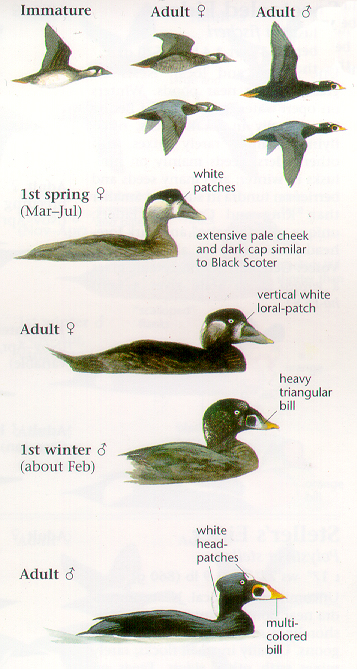
Photo taken from: The Sibley Field Guide by David Allen Sibley
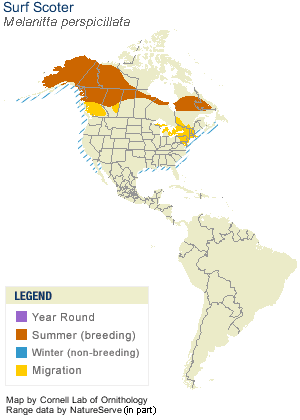
© 2003 Cornell Lab of Ornithology
|
Habitat |
|
Breeds on shallow lakes in boreal forest and tundra. Winters in shallow marine coastal waters, usually over pebble and sand bottom. |
|
Behavior |
|
Dives for prey on or near bottom. |
|
Food |
|
Freshwater invertebrates, especially mollusks. |
Taxonomy
| Kingdom: | Animalia |
| Phylum: | Chordata |
| Subphylum: | Vertebrata |
| Class: | Aves |
| Order: | Anseriformes |
| Family: | Anatidae |
| Subfamily: | Anatinae |
| Genus: | Melanitta |
| Species: | Melanitta perspicillata |
Similar Species |
|
|
Bird Sound |
|
Usually silent. Wings make humming noise in flight. Male makes low, clear whistle. Female makes croaking "krraak. |
|
Eggs look like this |
|
Photo taken from: ARCTOS Collaborative Collection Management Solution |
